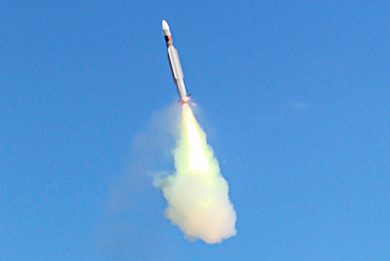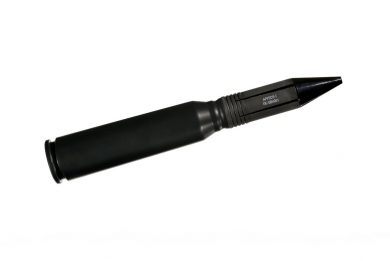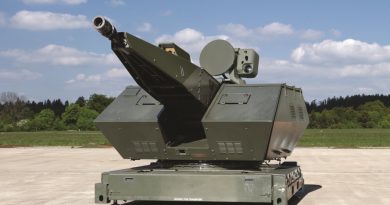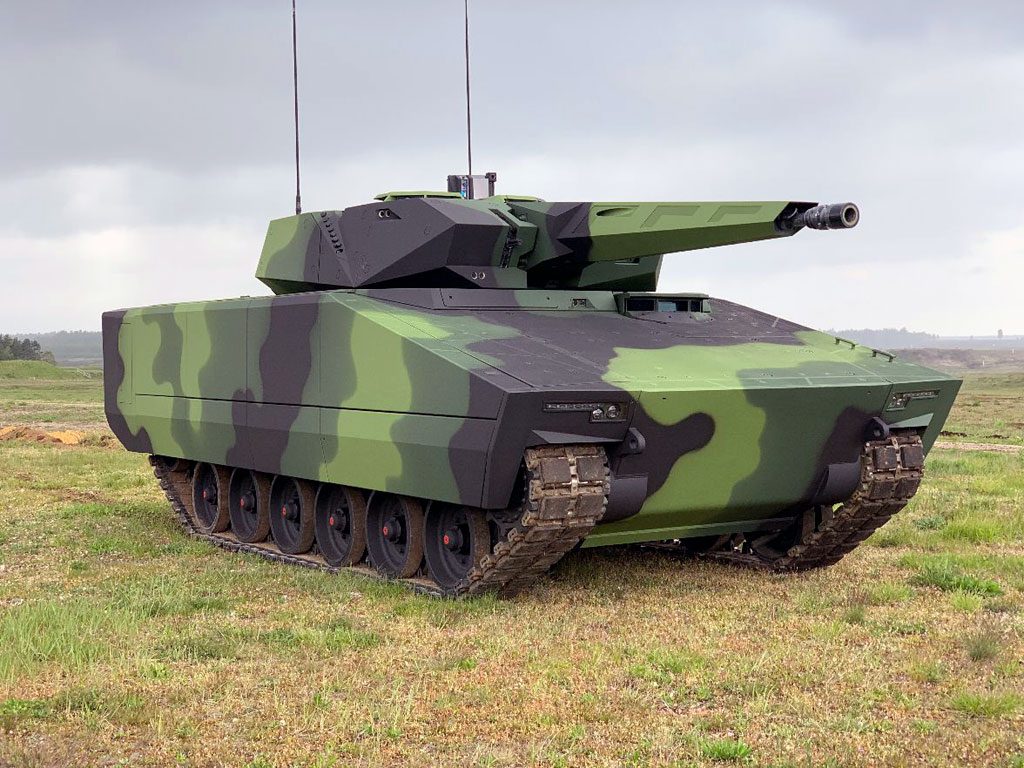
Rheinmetall’s Lynx KF41 targets three continents
11 May 2019
By Paolo Valpolini
Having seen the vehicle changing role from one day to the other during Eurosatory 2018, nobody can doubt about the modularity of the Lynx KF41 tracked vehicle developed by Rheinmetall at the company Center of Excellence for Tracked Armored Vehicles based at Unterlüß, in the Lower Saxony. While it still active in promoting the Marder IFV in some countries, Jordan being one of them, and while heavily contributing to the German Army Puma fighting vehicle, Rheinmetall decided to develop a modern, modular vehicle designed to be cost-effective, thus looking for MOTS state-of-the-art subsystems in many areas.
The decision to develop the Lynx, which has also a lighter version, the KF41 being the one around 40+ tonnes, was due to some upcoming bids from countries that needed to replace their outdated tracked infantry fighting vehicles.
Al least three of these are quite obvious, each of them being in a different continent, and it is sufficient following the journey of the Lynx KF41 after its unveiling at Eurosatory to list them: in August the vehicle was exhibited at the Land Forces Conference in Adelaide, South Australia, clearly aiming at the Land 400 Phase 3 project, one month later it was in Ostrava, Czech Republic, at the NATO Days event, to then cross the Atlantic to be present at AUSA 2018 in Washington D.C.
The Australian project, also known as Mounted Close Combat Capability, aims at acquiring up to 450 IFVs to replace the Army M113 APCs, 117 Manoeuvre Support Vehicles being also required.
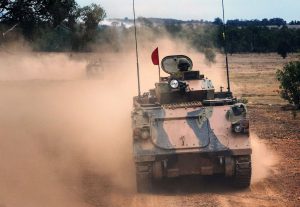 The M113 AS$ fleet is made of 266 APCs and a number of specialised versions, 38 Armoured Fitters, 12 Armoured Recovery Vehicle Light, 15 Armoured Ambulance, 43 Armoured Command Vehicle, 50 Armoured Logistic Vehicle and 21 Armoured Mortar, the total number being 445. The Request for Tender to which Rheinmetall answered in early March 2019 was for both the Lynx Infantry Fighting Vehicle (IFV) and the Lynx Manoeuvre Support Vehicle (MSV); a total of 281 vehicles fitted with the company Lance turret are being offered, 232 IFVs, 9 Engineer Recce, 21 Command and Control, and 19 Joint Fire Support. The total number of non-turreted vehicles is 119, split among 31 Combat Engineer, 22 Recovery, 25 Repair, 17 Manoeuvre Support and 24 Ambulance. Australia also issued a Request for Information for further 117 vehicles, 17 Logistics, 15 Mortar, 25 Mortar Ammunition, and 50 Protected Amphibious.
The M113 AS$ fleet is made of 266 APCs and a number of specialised versions, 38 Armoured Fitters, 12 Armoured Recovery Vehicle Light, 15 Armoured Ambulance, 43 Armoured Command Vehicle, 50 Armoured Logistic Vehicle and 21 Armoured Mortar, the total number being 445. The Request for Tender to which Rheinmetall answered in early March 2019 was for both the Lynx Infantry Fighting Vehicle (IFV) and the Lynx Manoeuvre Support Vehicle (MSV); a total of 281 vehicles fitted with the company Lance turret are being offered, 232 IFVs, 9 Engineer Recce, 21 Command and Control, and 19 Joint Fire Support. The total number of non-turreted vehicles is 119, split among 31 Combat Engineer, 22 Recovery, 25 Repair, 17 Manoeuvre Support and 24 Ambulance. Australia also issued a Request for Information for further 117 vehicles, 17 Logistics, 15 Mortar, 25 Mortar Ammunition, and 50 Protected Amphibious.
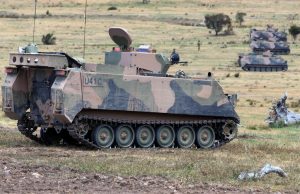 The key requirements are a common chassis, all vehicles protected by an active protection system (APS), the IFV version carrying six dismounts plus the crew, turreted vehicles being armed with a 30 mm cannon, while non-turreted vehicles will be fitted with the R400S Mark 2 Direct Drive-Heavy Duty (D-HD) remote weapon station provided by EOS.
The key requirements are a common chassis, all vehicles protected by an active protection system (APS), the IFV version carrying six dismounts plus the crew, turreted vehicles being armed with a 30 mm cannon, while non-turreted vehicles will be fitted with the R400S Mark 2 Direct Drive-Heavy Duty (D-HD) remote weapon station provided by EOS.
Rheinmetall offers can leverage on the company success in the Land 400 Phase 2 competition, where its Boxer CRV was selected. The 8×8 vehicle is fitted with the Lance modular turret and is armed with Rheinmetall’s Mk30-2 30mm automatic cannon, Rafael’s Spike LR2 antitank missile being already integrated in that turret under the Phase 2 programme. To win that competition Rheinmetall established a strong local supply chain, and is establishing a state of the art Military Vehicle Centre of Excellence (MILVEHCOE) near Brisbane in partnership with the Queensland State Government, which might well be used also for the Lynx, should this vehicle succeed. The commonality of many elements would also allow reducing the training and logistic burden.
 Moving from Australia to Europe, no RfP seems to have been issued yet by the Czech Ministry of Defence, although this is awaited soon. At the Future Forces Forum that took place in Prague in October 2018 Col. Pavel Lipka, Director Development of Land Forces Department, Force Development Division of the Czech Ministry of Defence showed some slides indicating 2020-2025 as an estimated procurement timeframe.
Moving from Australia to Europe, no RfP seems to have been issued yet by the Czech Ministry of Defence, although this is awaited soon. At the Future Forces Forum that took place in Prague in October 2018 Col. Pavel Lipka, Director Development of Land Forces Department, Force Development Division of the Czech Ministry of Defence showed some slides indicating 2020-2025 as an estimated procurement timeframe.
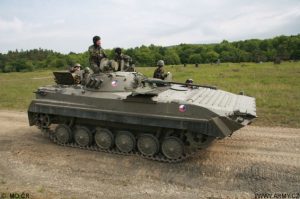 The requirement is for 210 vehicles, which will equip the 71st and 72nd Mechanised battalions, both belonging to the 7th Mechanised Brigade, the heavy element of the Czech Land Forces. The majority of those will be turreted, among them the PBVP, the infantry fighting vehicle, carrying a crew of three, two specialists and six dismounts, the PBV-V command and control, with its crew of three, three C4I operators and four dismounts, and the PBV-PZ reconnaissance vehicle, with a crew of three, two sensors operators and four dismounts. Both the IFV and the C2 vehicles will also be fitted with the EuroSpike launcher. Of the remaining four versions three will be fitted with a 12.7 mm RCWS, the one without being obviously the ambulance, known as POV-Zdr, which will carry a crew of three, four sitting and two stretcher casualties.
The requirement is for 210 vehicles, which will equip the 71st and 72nd Mechanised battalions, both belonging to the 7th Mechanised Brigade, the heavy element of the Czech Land Forces. The majority of those will be turreted, among them the PBVP, the infantry fighting vehicle, carrying a crew of three, two specialists and six dismounts, the PBV-V command and control, with its crew of three, three C4I operators and four dismounts, and the PBV-PZ reconnaissance vehicle, with a crew of three, two sensors operators and four dismounts. Both the IFV and the C2 vehicles will also be fitted with the EuroSpike launcher. Of the remaining four versions three will be fitted with a 12.7 mm RCWS, the one without being obviously the ambulance, known as POV-Zdr, which will carry a crew of three, four sitting and two stretcher casualties.
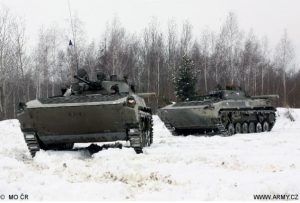 The POV-DP artillery observer vehicle will have a crew of two and one sensor operator, which will operate the mast mounted sensor suite, the vehicle being also fitted with the EuroSpike missile launcher, the same being also installed on the POV-Ž combat engineer version, which carries a crew of two and seven dismounts. The POV-V recovery will have a crew of three and will be fitted with a heavy lift crane and a hydraulic capstan. Twenty-nine 8×8 trucks for field service will be part of the package, 13 maintenance, eight repair-track and eight repair-special armament. Rheinmetall can obviously offer its own solutions, but might also decide to go for commonality with the Czech Army truck fleet.
The POV-DP artillery observer vehicle will have a crew of two and one sensor operator, which will operate the mast mounted sensor suite, the vehicle being also fitted with the EuroSpike missile launcher, the same being also installed on the POV-Ž combat engineer version, which carries a crew of two and seven dismounts. The POV-V recovery will have a crew of three and will be fitted with a heavy lift crane and a hydraulic capstan. Twenty-nine 8×8 trucks for field service will be part of the package, 13 maintenance, eight repair-track and eight repair-special armament. Rheinmetall can obviously offer its own solutions, but might also decide to go for commonality with the Czech Army truck fleet.
The Czech Republic might not be a one-off, as numerous other countries in that geographic area are also about to replace their tracked IFVs of Soviet origin, thus the fight with BAE Systems (CV9035), GDELS (ASCOD2) and with the PSM consortium (Puma) promise to be harsh. Here too Rheinmetall counts on an extended local supply chain and on transfer of technology to support its bid.
 Probably the most ambitious target is that in the United States of America, where the US Army has tried for now quite some years to find the replacement for its ageing Bradleys, the first of those vehicles was deployed to Europe in full Cold War Era in the early 1980s.
Probably the most ambitious target is that in the United States of America, where the US Army has tried for now quite some years to find the replacement for its ageing Bradleys, the first of those vehicles was deployed to Europe in full Cold War Era in the early 1980s.
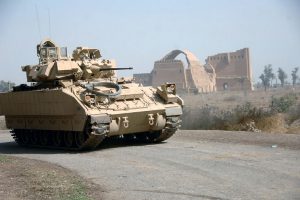 The Next-Generation Combat Vehicle (NGCV), which in October 2018 became known as the Optionally Manned Fighting Vehicle (OMFV) programme aims at fielding the first vehicles in FY2016, providing it does not end as the ill-fated FCS (Future Combat Systems) and GCV (Ground Combat Vehicle) programmes. The US requirements include the ability to conduct remotely controlled operations while the crew is off-platform, that of operate with no more than two crewmen with sufficient volume to carry at six other soldiers, transportability of two vehicles by a single C-17 in air transport configuration and be ready for combat in 15 minutes, the ability to super elevate weapons and simultaneously engage threats using main gun and an independent weapons system, lethality with medium range, threshold 30 mm objective 50 mm cannon, and missiles, protection against current and future threats, growth potential, embedded platform training and sustainability.
The Next-Generation Combat Vehicle (NGCV), which in October 2018 became known as the Optionally Manned Fighting Vehicle (OMFV) programme aims at fielding the first vehicles in FY2016, providing it does not end as the ill-fated FCS (Future Combat Systems) and GCV (Ground Combat Vehicle) programmes. The US requirements include the ability to conduct remotely controlled operations while the crew is off-platform, that of operate with no more than two crewmen with sufficient volume to carry at six other soldiers, transportability of two vehicles by a single C-17 in air transport configuration and be ready for combat in 15 minutes, the ability to super elevate weapons and simultaneously engage threats using main gun and an independent weapons system, lethality with medium range, threshold 30 mm objective 50 mm cannon, and missiles, protection against current and future threats, growth potential, embedded platform training and sustainability.
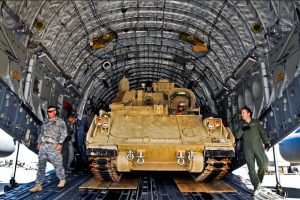 According to a Congressional Research Service document dated March 2019 the Army plans to award up to two vendors three-year Engineering and Manufacturing Development (EMD) contracts in Q1 of FY2020, each team being asked to build 14 prototypes. If the EMD will prove successful it will then take a Milestone C decision to move the program into the Production and Development phase in Q3 of FY2023, aiming at equipping the first units in Q1 of FY2026. The aforementioned document considers three contenders, BAE Systems with the latest CV90 version (which Rheinmetall indicates as CV 90 IV/V), General Dynamics with the Griffin III technology demonstrator, based on the British Army Ajax Scout Vehicle with a turret armed with a 50 mm cannon, and Rheinmetall’s Lynx, the German contender being teamed with Raytheon, production being obviously be done in the US. To those three contenders Rheinmetall adds South Korean Hanwha Defense, with its AS21 Redback, which might team with Textron. The US Army issued its Request for Proposal in late March, the programme being managed by the Next-Generation Combat Vehicle Cross-Functional Team (NGCV CFT), which is part of the newly formed four-star Army Futures Command.
According to a Congressional Research Service document dated March 2019 the Army plans to award up to two vendors three-year Engineering and Manufacturing Development (EMD) contracts in Q1 of FY2020, each team being asked to build 14 prototypes. If the EMD will prove successful it will then take a Milestone C decision to move the program into the Production and Development phase in Q3 of FY2023, aiming at equipping the first units in Q1 of FY2026. The aforementioned document considers three contenders, BAE Systems with the latest CV90 version (which Rheinmetall indicates as CV 90 IV/V), General Dynamics with the Griffin III technology demonstrator, based on the British Army Ajax Scout Vehicle with a turret armed with a 50 mm cannon, and Rheinmetall’s Lynx, the German contender being teamed with Raytheon, production being obviously be done in the US. To those three contenders Rheinmetall adds South Korean Hanwha Defense, with its AS21 Redback, which might team with Textron. The US Army issued its Request for Proposal in late March, the programme being managed by the Next-Generation Combat Vehicle Cross-Functional Team (NGCV CFT), which is part of the newly formed four-star Army Futures Command.
The Lynx KF41 has a 44 tonnes combat weight including six tonnes payload, and is powered by a Liebherr 1,140 hp engine coupled to a Renk transmission, the running gear being provided by Supashock. The Lance turret is fitted with the Main Sensor Slaved Armament (MSSA) providing hunter-killer capability as well as secondary armament that can be used from under armour. The main gun installed is currently Rheinmetall’s MK30-2/ABM, capable of firing airburst ammunition. The modular armour allows upgrades, no details about protection levels being available; as for the active protection system, Rheinmetall is proposing IMI Iron Fist to Australia and to European customers, while in the US the choice goes for Raytheon’s Quick Kill. Also the missile offer is split: Australia and Europe are being proposed Rafael’s Spike LR2, while in the US the choice goes to the TOW ER. Rheinmetall is already considering technology insertions in terms of UAV and electronic warfare capabilities.
The prototype seen at Unterlüß was ready to leave for the Czech Republic, to take part in IDET, the defence exhibition taking place in late May in Brno.


